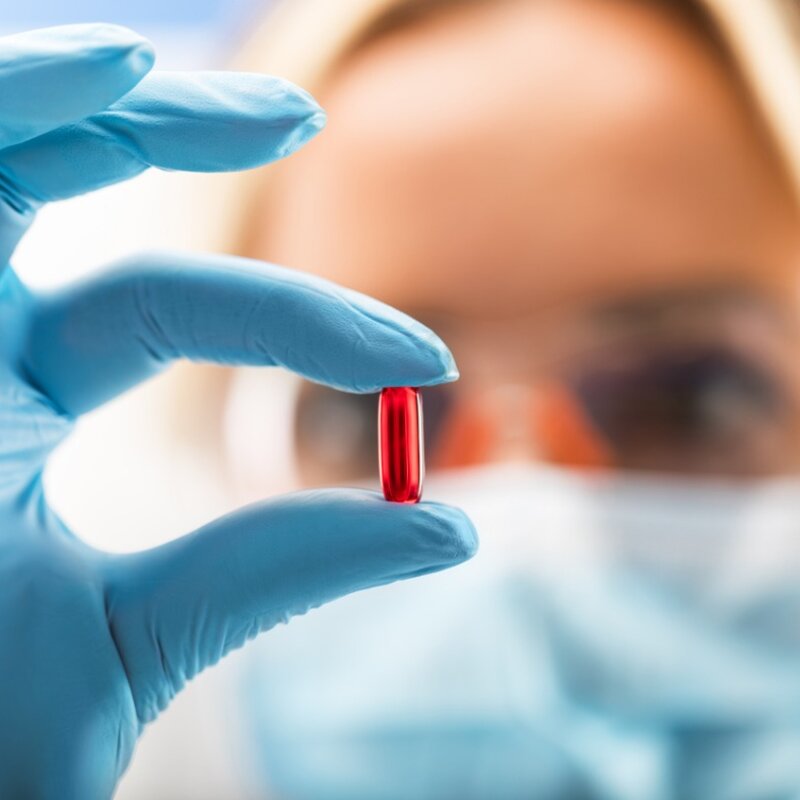
A new ISO standard on the identification of nanoparticles
Challenge
Nanoparticles (NP), defined as having one or more dimension of 1-100 nm, are used in a range of modern products, including cosmetics, sunscreen, coatings for solar cells, and materials for water treatment. A factor for their extensive use is the greater chemical activity imparted by their large surface area relative to their size. As they are small enough to enter the body through the lung, skin and bypass the blood brain barrier, they are also finding use in medical applications.
However the properties of increased activity and small size can have adverse consequences. Nanoplastics can cause environmental damage and some NPs, such as metal oxides and carbon nanotubes, have the potential to cause permanent cell or organ damage.
The recommended way to identify NPs is based on their size, and the ‘gold’ standard for assessing this is electron microscopy (EM) which measures this particle-by-particle from an image. However, a lack of both traceable NP reference materials and metrologically valid methods to identify particles with nonuniform sizes has hindered this approach.
In response, in 2010 the European Commission (EC) published Mandate M/461 calling on standardisation bodies to develop improved measurement procedures for size-identification of real-world nanoparticles as a prerequisite for the reliable evaluation of their potential toxicity to the environment and human health.
Solution
The nPSize project developed 8 different types of complex nanomaterials composed of silicon dioxide (SiO2) or titanium dioxide (TiO2) with various geometries, and gold nanoparticles with rod or cube shapes.
To assess the best measurement method these were characterised using 5 different techniques, 3 types of electron microscopy (SEM, TEM and TSEM), atomic force microscopy (AFM) and small-angle X-ray scattering (SAXS). This included instrument calibration, sample preparation, measurement and data analysis conditions.
Parameters ranged from ideal NPs (monodisperse spheres) to complex particles, polydisperse in size with non-spherical shapes and different chemical compositions.
Images obtained from SEM, TEM and TSEM were then manually annotated to develop a neural network for automatic particle analysis.
Traceable data was determined on size, size distribution, shape and concentration, and results submitted to ISO/TC 229 ‘Nanotechnologies’, who develop standards for test methodologies and specifications for NP reference materials. Knowledge has also been included in the OECD (Organisation for Economic Cooperation and Development) Working Party on Manufactured Nanomaterials (WPMN), responsible for NP toxicity screening.
Impact
In 2020, ISO/TC 229 published the international ISO 21363 standard, “Measurements of particle size and shape distributions by transmission electron microscopy” - the very first full ISO standard developed under this committee. This contained 6 pages of nPSize data on the use of TEM to characterise the project’s bipyramidal shaped TiO2 as one of the most challenging model NP to measure.
In 2021 ISO 19749 was published, incorporating project knowledge on the use of SEM for NP measurement using the TiO2 and SiO2 materials. Then, in 2023, the OECD Test Guideline 125 Nanomaterial Particle Size Distribution and Size Distribution of Nanomaterials was updated to include best practice for measuring NPs using AFM, SAXS, TEM and SEM. To accompany this, the consortium published a dedicated scientific paper on the use of EM for counting NPs.
Towards the end of nPSize, two Versailles Project on Advanced Materials and Standards (VAMAS) interlaboratory comparisons were launched on the measurement of two project materials, TiO2 nano bipyramids and bimodal SiO2, chosen due to their complex-shape. These results are anticipated to be incorporated into further revisions of ISO 21363 and ISO 19749 in the future.
Validated methodologies for identifying NPs, such as those developed, are an essential step in regulating these substances - ensuring that the economic and technical benefits they bring won’t come at a cost to human health or the environment.
- Category
- EMPIR,
- Standardisation,
